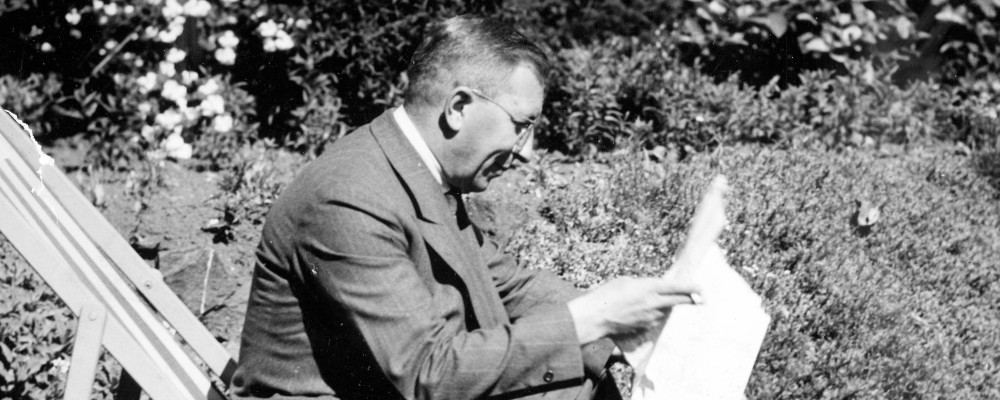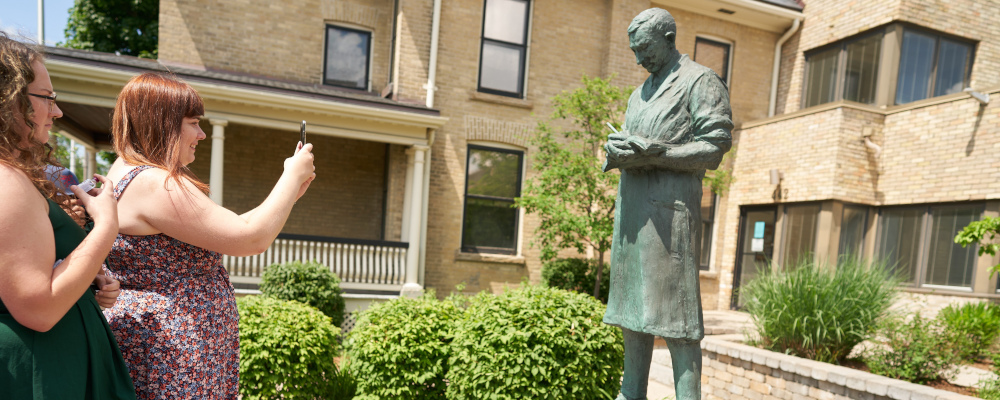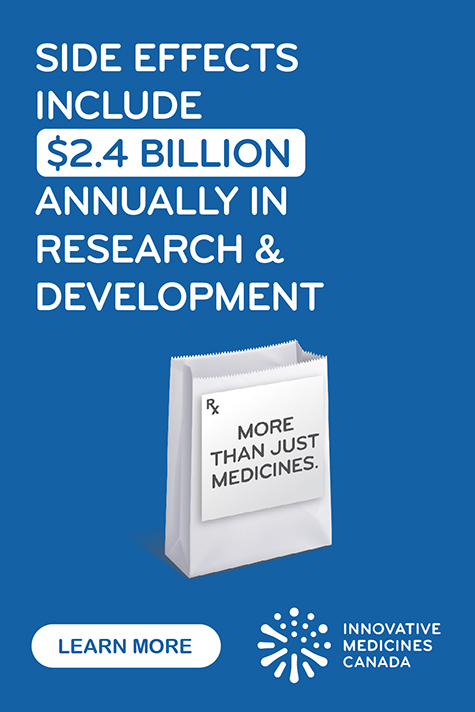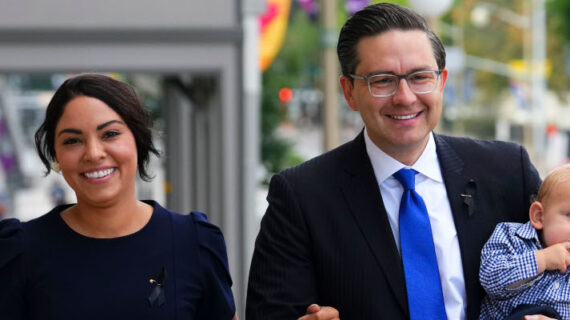The Hub is pleased to present a weekly column from author and historian Antony Anderson on the week that was in Canadian history.
February 21, 1941: Sir Frederick Banting dies near Musgrave Harbour, Newfoundland.
He was delirious, rambling, making little sense as he dictated endless streams of instructions, his left arm broken, one of his lungs punctured. Canada’s first Nobel laureate, knighted by the King, the world-famous discoverer of insulin, lay in a bunk of a twin-engine Lockheed Hudson bomber that had crash landed in the wilds of northeast Newfoundland, then another country in the British Empire and Commonwealth.
The war was on. Banting had been hankering to get over to England to do his duty, as he had done in the Great War as a surgeon. “I am not brave. There is no one who has more abject terror of shells, bombs, bullets and death…But surpassing this fear is the privilege of service to the wounded, those that fight.” There is no way such a distinguished medical pioneer would ever be allowed near a battlefield but perhaps he would find some research role. After all, he had discovered insulin. A chance talk over drinks at a cocktail reception with the senior air force commander led to Banting finding a place on a flight to England departing from distant Gander. Atlantic crossings were still something of a novelty—and in wartime, almost a reckless gamble—but Banting would not be budged.
Banting was born on the family farm just outside Alliston, Ontario in 1891. He followed a familiar path for his generation crossing from one century into the next, escaping to a bigger world, the University of Toronto, where he turned his back on his parents’ wishes for him to become a Methodist minister and instead chose to study medicine. He did not shine academically. The Great War convulsed his trajectory, but only momentarily as it would prove. He came back to complete his degree and opened a private practice in London, Ontario which limped along the verge of failure. Sinking into a not-so-genteel poverty, he scraped together some income assisting a professor with experiments and instructing anatomy and surgery at the University of Western Ontario. His love life was also a mess. His childhood sweetheart was not thrilled by his dim prospects.
On the night of October 31, 1920, preparing a lecture on metabolism, Banting happened to read an article about diabetes research that covered a well-trod hypothesis that a mysterious substance in the pancreas might affect the metabolism of sugar. First recognised centuries before, the condition destroyed lives in terrible, painful fashion. Doctors were helpless to stop the ravaging. This article sparked something in the beleaguered, flailing 28-year-old, “It was one of those nights when I was disturbed and could not sleep. I thought about the lecture and about the article and I thought about my miseries and how I would like to get out of debt and away from worry.” That night, Banting wrote down a few notes proposing an experiment in which he would tie off the pancreatic ducts of dogs in order to try and isolate and extract that mysterious pancreatic substance which still hadn’t been conclusively proven to exist. He was an unknown small-town doctor without a stellar academic record or any impressive qualifications let alone any serious research experience. He had never treated a patient with diabetes or shown any interest in the disease. Banting did not let these details derail him.
He was advised to reach out to John J. R. Macleod, a renowned professor of physiology at U of T. The master agreed to meet the novice. Insecure and unpolished, Banting was not a comfortable or convincing public speaker. Later Macleod would write, “I found that Doctor Banting had only a superficial text-book knowledge of the work that had been done on the effects of pancreatic extracts in diabetes and that he had very little practical familiarity with the methods by which such a problem could be investigated.”
Despite the dismal first impression, Macleod became intrigued enough by slim possibilities to offer Banting lab space and an assistant, though no salary. Banting agreed to consider the extraordinary offer and returned to London and more drift.
In the spring of 1921, he wrote to Macleod about starting the experiments, but he was also sniffing out a research post at Oxford, joining the Indian army, and signing on with an expedition to the Northwest Territories, which turned him down. His on and off again engagement was off again. With no other prospects, he headed to Toronto to enter the mysteries of the pancreas, a labyrinth already being explored by other far more experienced medical researchers across North America and Europe.
Macleod introduced Banting to Charles Best, a fourth-year medical student, and opened up a small, filthy operating room unused for years. The odds of the two neophytes making any headway were, to put it mildly, slim yet they persisted. By the late summer they produced an extract from a dog’s pancreas that lowered the blood sugar in a diabetic dog—a remarkable achievement. They needed help refining their crude extract so it could be administered to a human subject without causing side effects. Banting invited a visiting professor and biochemist from the University of Alberta, James Collip, to take on that challenge, and by January 1922, Collip’s elixir was ready. But Banting insisted his own extract should be the first ever administered. The test subject selected was a fourteen-year-old diabetic, Leonard Thompson: skeletal, listless, doomed. Banting and Best’s extract failed. Collip was then allowed to have his extract administered. It saved young Thompson’s life. The wonder drug was called insulin and wonders it did perform, bringing back countless lives from the brink of death; though insulin was not a cure but rather an essential therapy.

In 1923, Banting and Macleod were awarded the Nobel Prize in Medicine, Banting being the first Canadian so honoured. (Macleod was born in Scotland). Banting shared his portion of the prize money with Best, and Macleod did the same with Collip. The four of them never worked together again. The rest is history, or so the general story went for a very long time.
The science in this tangled tale is inspiring. The personal drama is dismaying. The full story was finally uncovered by Professor Michael Bliss in his excellent 1982 best seller, Discovery Of Insulin, which revealed a toxic mix of ego, insecurity, and pettiness, largely emanating from Banting who came to believe that a “grasping, selfish, deceptive, self-seeking” Macleod was trying to steal the idea and glory for himself. At one point, Banting and Collip got into a shouting match that perhaps got physical after Collip said he wouldn’t reveal his extraction process and was going to patent it in his own name. Even though this was the most violent confrontation in the story, Banting eventually reconciled with Collip, conceding his vital contribution. He fell out with Best and never forgave Macleod. Professor Bliss concluded more accurately, “On their own, Banting and Best were not experienced and knowledgeable enough to have carried their work through to a successful conclusion. They badly needed Macleod’s advice.”
Despite his raging anxiety about being cast aside, most of the ensuing glory and fame settled on Banting who was lavished with research funds he spent trying to cure cancer and other plagues, though he was never able to recapture the breakthrough he had ignited with his idle curiosity. The outbreak of the Second World War seemed to offer the canvas for another potential dose of glory.
In 1941, Banting found a spot on the bomber plane with faulty engines because he went to a cocktail party at the last minute. He survived the night of the crash into the following day, in and out of consciousness. When the pilot went off to find help, Banting somehow got up from the bunk and wandered a few metres from the downed plane until he collapsed in the snow. He lay some 10 miles south of Musgrave Harbour, a hamlet untouched by roads or rail, accessible by sea in the summer. Alerted by search planes, locals made the slow trek to the crash site and recovered the bodies of Banting, the radio operator, and the navigator. He was mourned around the world. His former colleagues and those who knew something of the personal squabbles said nothing in public.
In reply to a sharp critique of Banting and Best’s methodologies and assumptions, a prominent British doctor leaves us with a generous endpoint:
If [the discovery of insulin] proves to have resulted from a stumble into the right road, where it crossed the course laid down by a faulty conception, surely the case is not unique in the history of science. The world could afford to exchange a whole library of criticism for one such productive blunder.





